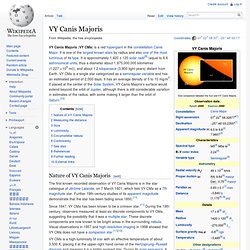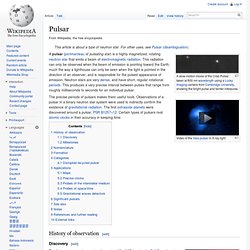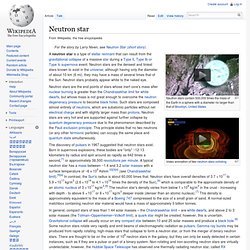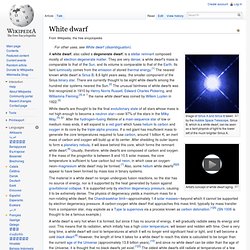

The Measurement That Would Reveal The Universe As A Computer Simulation. One of modern physics’ most cherished ideas is quantum chromodynamics, the theory that describes the strong nuclear force, how it binds quarks and gluons into protons and neutrons, how these form nuclei that themselves interact.

Earth. The Secret Knowledge of The Ancients Number Nine Code 911. The number 9 is the last number in a base 10 system which is the last and limit of all that is.

Nine is a number which has many interesting qualities that other numbers do not have and has been used to hold a hidden code that affects every person on earth. If you think nine is just another number, you are in for a big surprise. The number 9 is very interesting and suspect looking like an upside down 6. Even more interesting, there is something about it that most people and scientists don't know. Astrological age. There are two broad approaches about the effects upon the world due to the astrological ages.

Some astrologers believe the changes upon Earth are caused and marked by the influences of the given astrological sign, associated with the Age, while other astrologers do not follow the causative model and believe it is a matter of synchronicity.[3] Many astrologers believe that the Age of Aquarius has arrived recently or will arrive in the near future. On the other hand, some believe that the Age of Aquarius arrived up to five centuries ago, or will not start until six centuries from now.[4] Despite all references provided by various sources, astrologers cannot agree upon exact dates for the beginning or ending of the ages. Various ages are described below, such as the Age of Aquarius. Overview[edit] Astrological age.
The Time Temple Pt 1 - Giza Alignment Code. VY Canis Majoris. VY Canis Majoris (VY CMa) is a red hypergiant in the constellation Canis Major.

It is one of the largest known stars by radius and also one of the most luminous of its type. It is approximately 1,420 ± 120 solar radii[8] (equal to 6.6 astronomical units, thus a diameter about 1,975,000,000 kilometres (1.227×109 mi)), and about 1.2 kiloparsecs (3,900 light-years) distant from Earth. VY CMa is a single star categorized as a semiregular variable and has an estimated period of 2,000 days. It has an average density of 5 to 10 mg/m3. Pulsar. The precise periods of pulsars makes them useful tools.

Observations of a pulsar in a binary neutron star system were used to indirectly confirm the existence of gravitational radiation. The first extrasolar planets were discovered around a pulsar, PSR B1257+12. Certain types of pulsars rival atomic clocks in their accuracy in keeping time. History of observation[edit] Discovery[edit] The first pulsar was observed on November 28, 1967, by Jocelyn Bell Burnell and Antony Hewish.[1][2][3] They observed pulses separated by 1.33 seconds that originated from the same location on the sky, and kept to sidereal time. Magnetar. Artist's conception of a magnetar, with magnetic field lines.

Description[edit] Like other neutron stars, magnetars are around 20 kilometres (10 mi) in diameter and have a greater mass than the Sun. Neutron star. Neutron stars contain 500,000 times the mass of the Earth in a sphere with a diameter no larger than that of Brooklyn, United States A neutron star is a type of stellar remnant that can result from the gravitational collapse of a massive star during a Type II, Type Ib or Type Ic supernova event.

Neutron stars are the densest and tiniest stars known to exist in the universe; although having only the diameter of about 10 km (6 mi), they may have a mass of several times that of the Sun. Neutron stars probably appear white to the naked eye. White dwarf. Artist's concept of white dwarf aging.

A white dwarf, also called a degenerate dwarf, is a stellar remnant composed mostly of electron-degenerate matter. They are very dense; a white dwarf's mass is comparable to that of the Sun, and its volume is comparable to that of the Earth. Its faint luminosity comes from the emission of stored thermal energy.[1] The nearest known white dwarf is Sirius B, 8.6 light years away, the smaller component of the Sirius binary star. There are currently thought to be eight white dwarfs among the hundred star systems nearest the Sun.[2] The unusual faintness of white dwarfs was first recognized in 1910 by Henry Norris Russell, Edward Charles Pickering, and Williamina Fleming;[3], p. 1 the name white dwarf was coined by Willem Luyten in 1922.[4] The Most Distant, Dark Galaxy Ever Found! : Starts With A Bang. “One mustn’t look at the abyss, because there is at the bottom an inexpressible charm which attracts us.”

-Gustave Flaubert The deepest depths of space, out beyond our atmosphere, our Solar System, and even our galaxy, hold the richness of the great Universe beyond. Stretching for billions of light years in every direction, there are structures large and small, dense and sparse, everywhere we’ve ever dared to look. Image credit: R. Jay GaBany, Cosmotography.com. In addition to the visible, luminous matter we see in the image above, there’s both non-luminous normal matter and dark matter.
Quark. A quark (/ˈkwɔrk/ or /ˈkwɑrk/) is an elementary particle and a fundamental constituent of matter.

Quarks combine to form composite particles called hadrons, the most stable of which are protons and neutrons, the components of atomic nuclei.[1] Due to a phenomenon known as color confinement, quarks are never directly observed or found in isolation; they can be found only within hadrons, such as baryons (of which protons and neutrons are examples), and mesons.[2][3] For this reason, much of what is known about quarks has been drawn from observations of the hadrons themselves.
The quark model was independently proposed by physicists Murray Gell-Mann and George Zweig in 1964.[5] Quarks were introduced as parts of an ordering scheme for hadrons, and there was little evidence for their physical existence until deep inelastic scattering experiments at the Stanford Linear Accelerator Center in 1968.[6][7] Accelerator experiments have provided evidence for all six flavors. Classification[edit] 550px-Evolved_star_fusion_shells.svg.png (550×550) Supernova. A supernova (abbreviated SN, plural SNe after "supernovae") is a stellar explosion that is more energetic than a nova. It is pronounced /ˌsuːpəˈnoʊvə/ with the plural supernovae /ˌsuːpəˈnoʊviː/ or supernovas. Supernovae are extremely luminous and cause a burst of radiation that often briefly outshines an entire galaxy, before fading from view over several weeks or months. Gamma-ray burst. Artist's illustration showing the life of a massive star as nuclear fusion converts lighter elements into heavier ones.
When fusion no longer generates enough pressure to counteract gravity, the star rapidly collapses to form a black hole. Theoretically, energy may be released during the collapse along the axis of rotation to form a gamma-ray burst. Gamma-ray bursts (GRBs) are flashes of gamma rays associated with extremely energetic explosions that have been observed in distant galaxies.
Hypernova. Eta Carinae, in the constellation of Carina, one of the nearer candidates for a future hypernova. Massive SuperOrganism with 'Social Intelligence' is Devouring the Titanic. Quietest place on Earth mutes all sounds, messes with your head. Mysteriously dark Mars regions are made of glass - space - 15 April 2012. THEY look dark, but mysterious expanses on Mars are mainly made of glass forged in past volcanoes. The dark regions make up more than 10 million square kilometres of the Martian northern lowlands, but their composition wasn’t clear. Past spectral measurements indicated that they are unlike dark regions found elsewhere on the Red Planet, which consist mainly of basalt.
Glossary: Astronomical Unit (AU) Minimum safe distance to black hole - Page 3. Neutrinos best studied in space. Size Of The Universe. What Is The Singularity And Will You Live To See It? 1. What is a Higgs Boson? Pulsar.